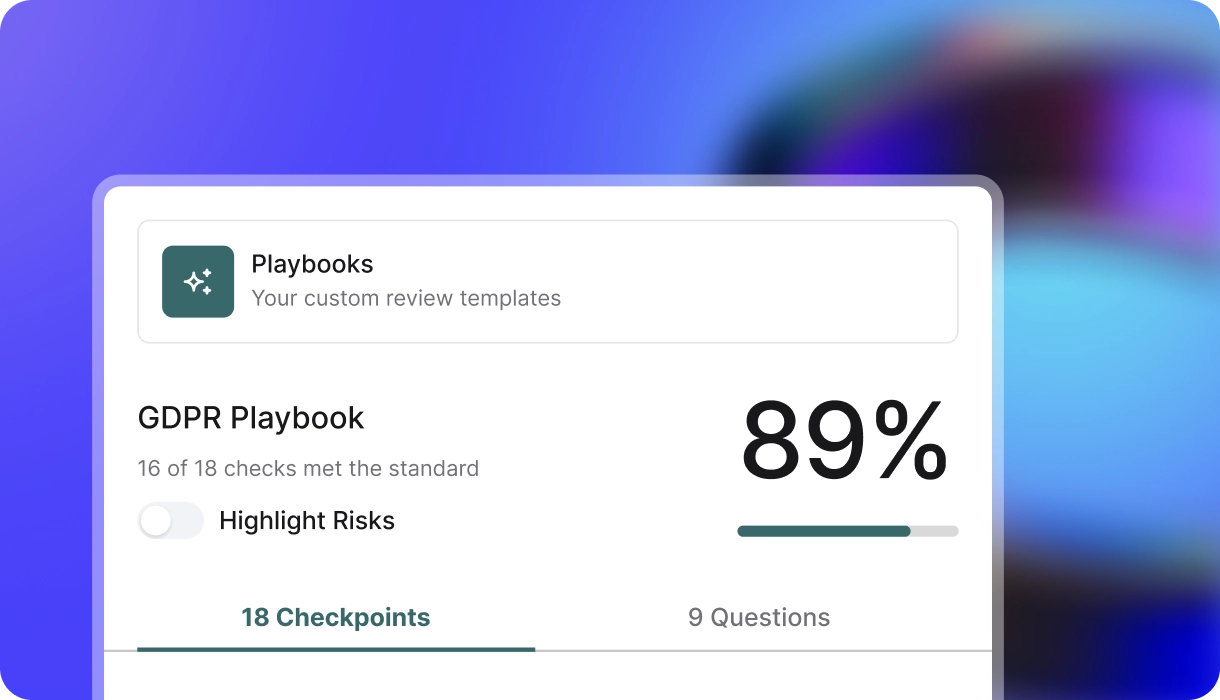The request lands on your desk: a batch of 20 new vendor agreements, an urgent need to check all sales contracts for a specific clause, or an update to a company-wide policy that needs to be verified across all employment agreements. For in-house legal teams and busy law firms, this kind of routine due diligence is a constant, high-stakes reality. It's also a well-known bottleneck—a manual, time-consuming process that drains resources and opens the door to human error.
But what if you could apply a systematic, intelligent playbook to that entire set of documents in minutes, not days? The emergence of Legal AI platforms like LegalWeave has fundamentally changed the equation, transforming routine diligence from a manual slog into a strategic, data-driven exercise.
The Hidden Costs of Manual Contract Review
The traditional approach to document review relies on brute force. Lawyers open files one by one, their eyes scanning for key terms while comparing against a mental checklist or a separate standards document. This process is not just slow; it's riddled with hidden costs and risks:
- Inconsistency: One lawyer might flag a liability clause as high-risk, while another deems it acceptable. This leads to inconsistent risk assessment across the organization.
- Fatigue and Error: After reviewing the tenth contract in a row, even the most diligent professional can miss a subtle but critical detail, like an auto-renewal clause.
- Wasted Expertise: Highly trained (and highly paid) legal professionals spend a disproportionate amount of their time on low-level, repetitive tasks instead of high-value strategic work.
An AI-powered playbook is the antidote to this chaos. It is a dynamic set of instructions that a legal AI uses to systematically analyze every document against your company's specific standards. This ensures every contract is scrutinized with the same level of rigor, every time, eliminating inconsistency and dramatically improving compliance.
How the AI Playbook Works: From Chaos to Clarity
The process is designed for maximum efficiency. It begins not with opening a single PDF, but by uploading an entire folder of documents into a secure platform. From there, the AI takes over.
1. Bulk Analysis: Instead of reviewing one-by-one, the AI applies your chosen playbook to hundreds of documents simultaneously. The playbook itself is a combination of risk-based checklist questions ('Does this agreement contain our standard indemnification clause?') and data extraction commands ('Extract the governing law from all documents').
2. Structured Output: The results are instantly transformed into a powerful, interactive comparison table. Every document becomes a row, and every key data point—payment terms, renewal dates, liability caps—becomes a column. This provides an unprecedented 'at-a-glance' overview of your entire document set.
With this table, lawyers can instantly spot deviations and non-standard terms that would have taken days of painstaking manual work to find. This allows for proactive risk management and ensures every agreement aligns with internal policies.
The Strategic Shift: Empowering, Not Replacing, Lawyers
A common fear is that AI will replace lawyers. The reality is that AI-powered tools elevate their role. By automating the low-level, repetitive task of *finding* information, it frees up legal teams to focus on the high-value, strategic work of *interpreting* that information, advising business stakeholders, and negotiating better terms.
The AI presents the findings; the lawyer provides the judgment. This partnership allows legal teams to move from being a reactive cost center to a proactive, strategic asset for the entire organization.
By adopting an AI-powered playbook for your routine due diligence, you can significantly accelerate your review cycles, dramatically reduce the risk of non-compliance, and unlock your team's full potential to deliver strategic value. It's a fundamental change that turns a necessary burden into a powerful competitive advantage.
